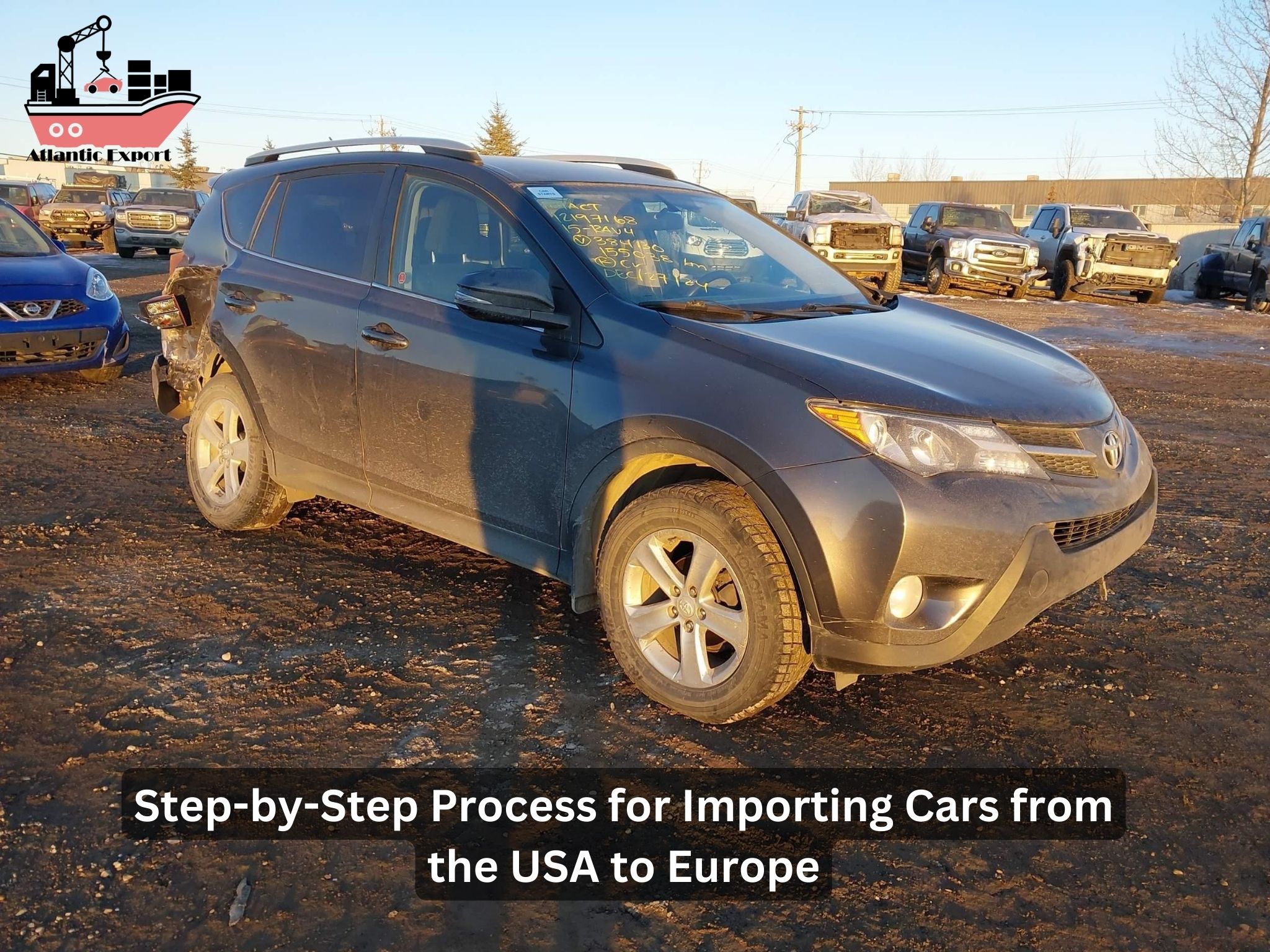Understanding the Car Import Process from the United States to Europe
Importing a vehicle from the United States to Europe can be a complex process involving multiple steps, detailed documentation, and strict compliance with various regulations. Whether you’re a classic car enthusiast or looking to bring a newer model across the Atlantic, our comprehensive guide will walk you through every step of the import process to ensure a smooth transition.
Research the Import Requirements of Your Destination Country
Before starting the vehicle importation process, it’s essential to understand the specific requirements of the country where you plan to register your car. Germany, France, the Netherlands, and other European Union countries have different standards for emissions, safety, and roadworthiness tests.
- Emission Standards: Ensure the car meets EU emissions standards like Euro 5 or undergo modifications to comply.
- Safety Regulations: Vehicles must pass safety inspections like contrôle technique in France or TÜV inspections in Germany.
- Vehicle Age Restrictions: For instance, the 25-year rule allows older classic cars to bypass some compliance regulations.
Knowing these factors helps you determine if your car is eligible for importation or if modifications are necessary.
Gather the Necessary Documents for Customs Clearance
Proper documentation is crucial for a smooth customs clearance process. Missing papers can delay your shipment and incur additional fees.
Key documents include:
- Bill of Lading (BOL) or Air Waybill
- Original Vehicle Title and Registration
- Purchase Invoice (showing the value of the car)
- Customs Declaration Form
- Certificate of Origin
- Insurance Documents
- Export Certificate from the US Customs and Border Protection (CBP)
Working with a customs broker can simplify this step and ensure that your paperwork is correctly filled out.
Shipping the Car to Europe
When it comes to shipping, you’ll have to decide between two main options: Roll-on/Roll-off (RoRo) or Container Shipping.
- RoRo Shipping: More affordable, but the vehicle is exposed to the elements during transport.
- Container Shipping: More expensive but offers added protection and allows you to ship personal goods alongside the car.
Additionally, you must consider shipping costs, insurance fees, and estimated time of arrival.
Customs Clearance and Paying Duties and Taxes
Once the vehicle arrives in Europe, it must go through customs clearance. At this stage, you’ll need to pay the relevant import duties, value-added tax (VAT), and potentially excise duty.
Typical taxes and fees include:
- Import Duties: Around 10% of the car’s value
- VAT: Varies by country (19% in Germany, 20% in France)
- Excise Tax: Based on CO2 emissions or engine size in some countries
Your customs broker can calculate the total costs to help you prepare financially.
Modifications and Compliance with EU Standards
After clearing customs, the next step is bringing your vehicle into compliance with European standards. This may involve:
- Headlight Adjustments: Switching from US beam patterns to EU specifications
- Emissions Modifications: Installing additional components to meet EU CO2 emissions standards
- Speedometer Conversion: Changing miles per hour (MPH) to kilometers per hour (KPH)
Depending on the car’s age and model, these modifications may vary in complexity and costs.
Vehicle Inspection and Registration
Before your car can hit the road, it must pass an official inspection and complete registration.
- Roadworthiness Tests: Countries like Germany require a TÜV inspection, while France mandates contrôle technique.
- Vehicle Registration: Submit all necessary documents to the local vehicle registration office.
- License Plates and Registration Certificate: Once approved, you’ll receive your license plates and official registration certificate.
At this stage, your vehicle is officially ready for use within the EU!
Final Steps and Ongoing Compliance
Even after successful importation, you should stay informed about local regulations, potential annual taxes, and mandatory insurance requirements. Partnering with experts like Atlantic Export can streamline your import process and ensure that you stay compliant.
Conclusion:
Importing a car from the USA to Europe may seem like a daunting task, but with the right knowledge and careful planning, the process becomes manageable and rewarding. By understanding the customs clearance process, adhering to EU emissions standards, and preparing for taxes and fees, you can ensure your vehicle importation goes smoothly. Whether you’re bringing in a classic car, a used vehicle, or a modern luxury car, following this step-by-step guide will help you navigate the journey from purchase to registration with confidence.
Partnering with a trusted company like Atlantic Export can make all the difference — we handle the complexities of shipping, customs declarations, and compliance so you can focus on enjoying your new vehicle on European roads. With careful attention to detail, patience, and the right support, you’ll soon be behind the wheel of your imported car, ready to explore everything Europe has to offer.
FAQs
1. How long does it take to import a car from the USA to Europe?
The process can take anywhere from 4 to 12 weeks, depending on shipping times, customs clearance, and necessary modifications.
2. What is the 25-year rule for classic cars?
The 25-year rule allows classic cars over 25 years old to bypass some emissions and safety regulations, making them easier to import.
3. How much are import duties and VAT in Germany?
Import duties are 10%, and VAT is 19% of the vehicle’s value, including shipping and insurance costs.
4. Can I ship personal belongings with my car?
Yes, but only with container shipping. RoRo shipping only allows the vehicle itself without extra goods.
5. Is hiring a customs broker necessary?
While not required, a customs broker can handle documents, calculate fees, and ensure smooth customs clearance, saving you time and reducing stress.
For expert assistance in car imports, trust Atlantic Export to guide you every step of the way, from shipping to registration. Let us help you navigate the importation process with ease and confidence!

Leave a Reply